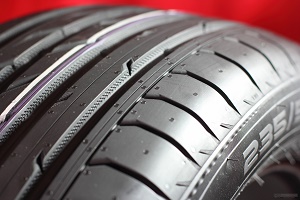We often see customers who are a little overwhelmed by the tire buying process. There are so many types of tires for different vehicles and different driving styles, all at different price points. Here are a few things every driver needs to know about tires:
Thank you for reading this post, don't forget to subscribe!A tire is constructed from the inside out, starting at the inner liner. There are 20 to 25 different components in every tire; fabric belts are wrapped around the inner liner, with steel belts, more fabric belts and other materials layered between the tread surface and the inner liner. These layers provide strength, noise suppression and ride quality.
· Newer low-profile tires are popular with many drivers, if only for aesthetic/style reasons. It’s important to know low-profile tires may handle better and offer better steering response and cornering performance, but they will also have a harsher ride quality than traditional designs with taller, softer sidewalls.
· Along with budget, think about your driving style and expectations. Do you prefer a quiet, smooth-riding tire? If so, grand touring or touring tires may be the way to go. Do you like better performance? Consider summer or UHP tires, but remember they will also wear faster than all-season or touring tires. Do you anticipate driving in light winter weather? All-season tires may be a great fit.
· Remember your vehicle left the factory with a certain size of wheel and tire, and the car’s handling, steering response, braking performance and ride quality were all tuned for that specific size. Changing anything in that equation should be done carefully. You’re better off in most cases staying with manufacturer’s recommendations for tire and wheel sizes.
· Gas prices may fluctuate, but they are probably never going to be cheap again. Tires are an important part of fuel economy, and some industry experts contend drivers can see as much as a 15-20 percent difference in fuel economy depending on which tires they select. Low-rolling-resistance tires continue to evolve and improve…and of course, proper inflation to recommended air pressure is crucial to fuel economy.
· If you drive a light truck, be mindful of how you’re going to use that truck. The tire’s load rating is important if you expect to haul heavy loads or do any towing. Also consider how often you might want to leave the pavement – many all-terrain tires are good for light off-road use while still offering a civilized ride and road manners.
· Tires are still a “you get what you pay for” proposition. Don’t get us wrong, there are plenty of great-quality tires at lower price points, but tires that seem too good to be true price-wise, usually are. Do your due diligence in looking up consumer reviews and ratings before making your decision. And of course, our service advisors will always be happy to help point you in the right direction.
We hope this helps a little in your tire buying process – if it’s time to get some new tires on your vehicle, make an appointment and we’ll be happy to get you set up.


